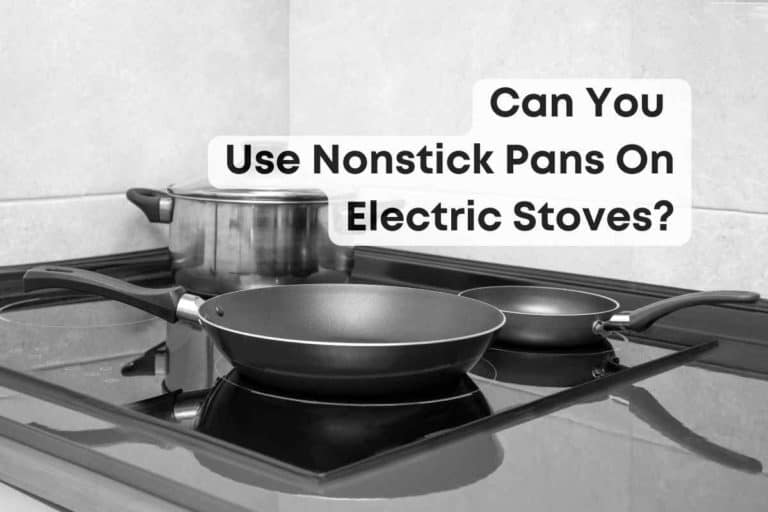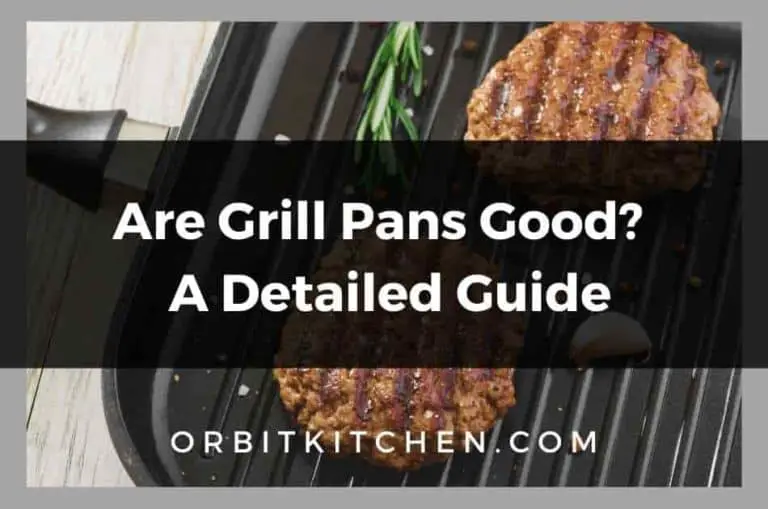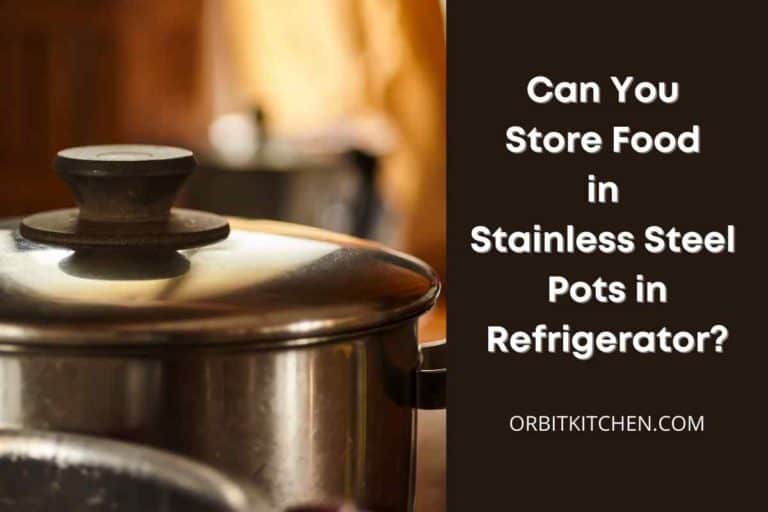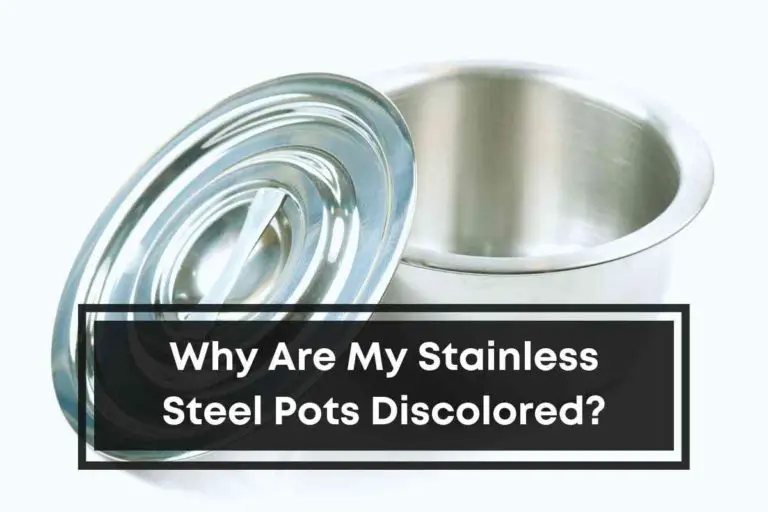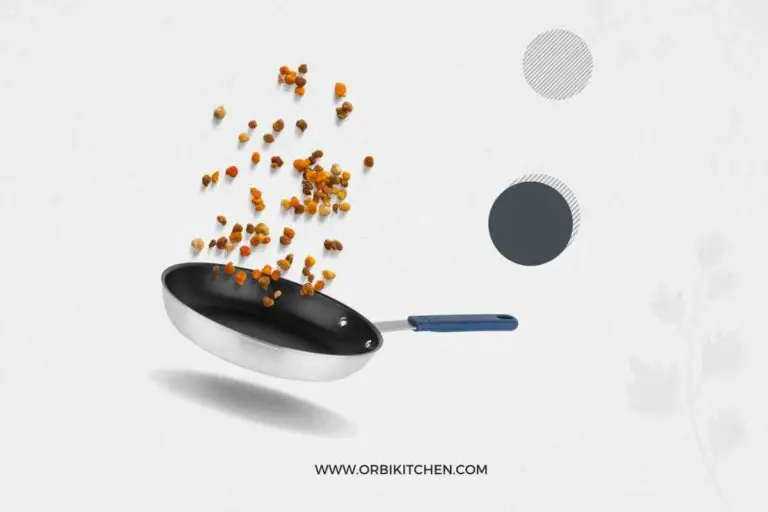Can You Put Stainless Steel Pots In The Oven?
Stainless steel kitchenware is popular among cooks around the globe. Stainless steel pots are multipurpose, convenient, sturdy, easy to clean, and the perfect addition to your utensils. Additionally, if you take proper care of them, they are likely to last longer.
Can You Put Stainless Steel Pots in the Oven?
Stainless steel pots can go in the oven, but it is important to check the manufacturer’s instructions first. Some stainless steel pots are oven-safe, while others are not. If the pot is not oven-safe, it will likely have a label that says so. If in doubt, it is always best to err on the side of caution and not put the pot in the oven.
Stainless steel pots are safe to use in the oven, provided that they have metal or oven-proof handles. But if they have plastic or wooden handles or glass lids, try not to use them in the microwave. Or else, you can see whether they are oven proof or not by checking the oven-proof label under their bottom, in their packaging, or on the manufacturer’s website.
Keep reading to learn how you can check if your pot and pans can go in the microwave. Moreover, we will tell you if it is a good idea to bake sourdough bread in a stainless steel pot. And if you can bake in a stainless pot like a Dutch oven.
If you are interested in checking out the best stainless steel pots for the oven, you can find them on Amazon by clicking here.
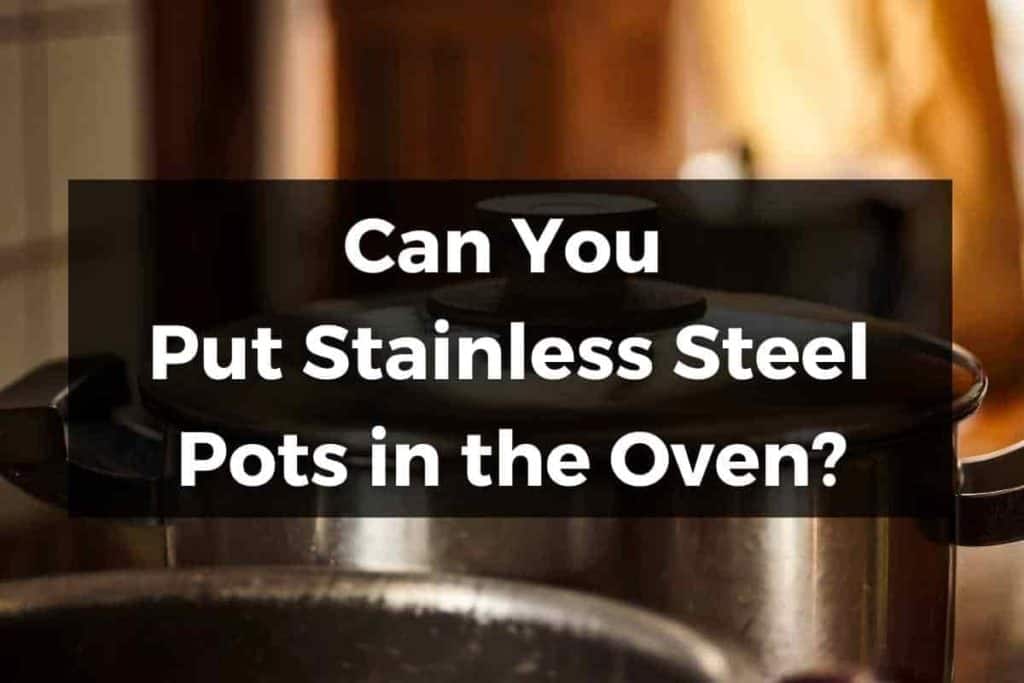
If you are interested in buying the best bakeware products and accessories for the kitchen, be sure to visit my Recommended Products Page (click to see my page), Which includes all of my top picks by category.
Can You Bake With Stainless Steel Pots?
The high-quality or multi-ply stainless steel pots are safe for baking because they retain heat better and do not get warped and damaged even at high temperatures. However, before using these pans in the oven, ensure that the handles, lid, and knobs are oven-safe.
Oven-safe kitchenware can upgrade your cooking. There are many skillets that are oven-safe, but some are better than others. Therefore, it is always best to check which is better, according to the recipe you are making.
Stainless steel pots are generally best for use in an oven because they do not get damaged even at high temperatures. They can perfectly go in the microwave and the dishwasher. Nevertheless, it is best to use high-quality stainless steel pans and pots in order to avoid mishaps.
Further, high-grade stainless steel also has the characteristics of aluminum to provide even heat distribution. However, it does not react with your food and leech into it at high temperatures as aluminum does. In addition, stainless steel is resistant to rust, denting, and corrosion.
Read Also: Can You Wash Stainless Steel Pots in the Dishwasher?
Why Stainless Steel Pots Are Suitable For Baking?
The multi-ply stainless steel pots and pans are suitable for baking because they come with an aluminum core that distributes heat evenly. Despite its aluminum core, the product does not produce a metallic taste when it is in contact with acidic foods. Furthermore, stainless steel does not get damaged even at extremely high temperatures.
However, normally stainless steel pots are not recommended for baking because they do not heat up evenly, and your food can get burnt from the bottom.
Furthermore, if you are using high-quality stainless steel pots in the oven, make sure that their handles are melt-proof or made of metal. Moreover, stainless steel pots and pans do not have non-stick properties; thus, your food can stick to their bottoms. But you can glaze your pan with oil to avoid sticking. In any case, if your food gets stuck to the bottom, you can make a pan sauce from those food bits and pieces.
Can A Stainless Steel Pot Bake Like A Dutch Oven?
A stainless steel pot may not bake like a Dutch oven because it is thin, compared to the Dutch oven, heats up quickly, and does not retain heat for longer. Contrarily, the Dutch oven is made of cast iron that has more thickness and retains heat better.
However, if you want to use a stainless steel pot instead of the Dutch oven, make sure your pot lid fix tightly. Further, you can use aluminum foil to cover your stainless steel pot and then put a lid over it, and your lid will fit in this way. Also, it may take longer to prepare than a Dutch oven because you have to cook it at a lower temperature.
Also, check out our comprehensive guide to storing food in stainless steel pots in fridge for more information.
How To Know If Your Pots And Pans Are Oven Safe Or Not?
If you want to know if a pan is oven-safe or not, you must know whether all of its parts, including handles and coating, are oven-safe. Further, if you want to cover the pots and pans, the lid should also be safe to go in the oven. Here we will briefly discuss materials, handles, and coatings that help you determine if your pots are oven safe.
1. Material
The first thing you need to consider is that the material should be oven safe. Oven-proof pans are made of cast iron, stainless steel, ceramic, glass, or a combination of these materials.
On the other hand, avoid using copper, aluminum, wood, plastics, and silicon pans in the oven. Because copper and aluminum can react with acidic foods at high temperatures, and wood and plastic pans can warp, melt, or bend.
2. Coating
The next thing to consider is the coating of the pan. The coatings of pots and pans can get damaged at high temperatures. However, enameled skillets, ceramic coated pans, cast iron, and stainless steel with oil glazing can go up to 500°F.
Additionally, non-stick pans are very convenient to use, but they cannot stand temperatures up to 500°F. They can lose their non-stick quality, and Teflon coatings may release harmful chemicals. Furthermore, you should always read the user manual to know if the glazing is oven safe or not and what temperature it can stand at, and for how long to avoid damaging the coating.
3. Handles
Most of the time, handles are made of insulating materials such as plastic and wood to make it comfortable to hold hot pans and pots. But these materials restrict skillets’ use in the oven because these materials are heat sensitive and can melt at high temperatures. Moreover, pots with handles made of silicone, rubber, and metals can go in the oven and tolerate high temperatures.

You can find these high-quality Handle Covers on Amazon by clicking here.
However, the rubber may lose its color due to heat, but it will not affect the functionality of the handles. And the metal handles may heat up; therefore, always use oven mitts while removing pots from the oven. Further, some modern pans now come with removable handles that increase their heat resistance and make them easier to microwave and store. You can detach and reattach the handles by pressing a button.
4. Lids
If you want to use a lid on the pots and pans in the oven, make sure it is made of oven-proof glass. The oven-safe lids can usually withstand 400°F. However, if your glass lids have plastic knobs, you may not use them in the oven because they can get melted due to less resistance to heat.
Additionally, you may remove knobs before putting the lid in the oven, or you can buy stainless steel knobs. But use oven mitts while removing the top with stainless steel knobs because they get hot. Further, if you do not have oven-safe lids, you can cover your pots and pans with aluminum foil before placing them in the oven.

Check out these oven-safe lids on Amazon here.
Do Stainless Steel Pots Turn Brown in the Oven?
If stainless steel pots are not properly prepared before cooking, your food can stick to the bottom and turn brown. Therefore, always preheat your stainless steel skillets and season them properly to avoid sticking and brown bits.
However, if for some reason your food is stuck to the bottom, causing brown bits (called fond), simply remove all the food and oil from the pan and pour a liquid of your choice, such as wine, water, or stock. Then let it boil, scrape off the brown that will be full of flavor, add seasoning, and it will be the perfect sauce for your food.

If you like this oven-safe stainless steel pot, you could buy it on Amazon here.
Does Food Stick In Stainless Steel Pots When Used In The Oven?
Food bits can stick to your stainless steel pot’s bottom because stainless steel does not possess non-stick characteristics. If you properly prepare stainless steel pots before baking, your food will not get stuck to them. It may be the real concern point while using stainless steel pots.
However, preheat your empty stainless pot at medium temperature to prevent sticking. Let it heat up for two to three minutes, and then add some cooking oil.
Furthermore, it may not be the best course of action to heat empty pans, but in the case of stainless steel, it can actually work to your advantage. Because it looks like the stainless steel pans have smooth surfaces, but they may have microscopic holes or irregularities, and oil covers them. Further, the oil will take around two minutes to heat up and then works as a protective layer between food and the stainless steel pot.
Additionally, to check if your stainless pan is ready, you can add one drop of water to it, and it makes the sound of Tssssss, then you can add food. On the other hand, do not overcook the oil. If your oil is leaving smoke, then it is overheated. Let it cool down, and then add your food to the pan.
If your stainless steel pan is seasoned properly then there are very less chances of food stick. Seasoning the stainless steel will provide a non-stick surface and will help you to cook food without sticking.
Can You Bake Sourdough Bread In A Stainless Steel Pot?
Baking sourdough bread in a stainless steel pot may not be a good idea because the pan needs to retain heat consistently and a heavy lid to stop steam from escaping, and stainless steel pans do not conduct heat for longer and do not retain steam. But, the Dutch oven provides these two essentials to bread.
However, if you want to bake bread in a stainless steel pot, you can use aluminum foil to cover the pan and then place a lid over it to create an enclosed environment for steam. Further, you can use baking stones or baking steel to keep the temperature of the oven hotter which will retain heat for longer and be consistent.
Can You Use Oven Cleaner On Stainless Steel Pots?
Do not use oven cleaner or any other harsh chemical on stainless steel pots because it may clean them instantly but can cause scratching, discoloration, and permanent damage.
Therefore, always stick to dish soap and light chemicals for cleaning and washing the stainless pots and pans because if you take proper care of them, they can last a lifetime.
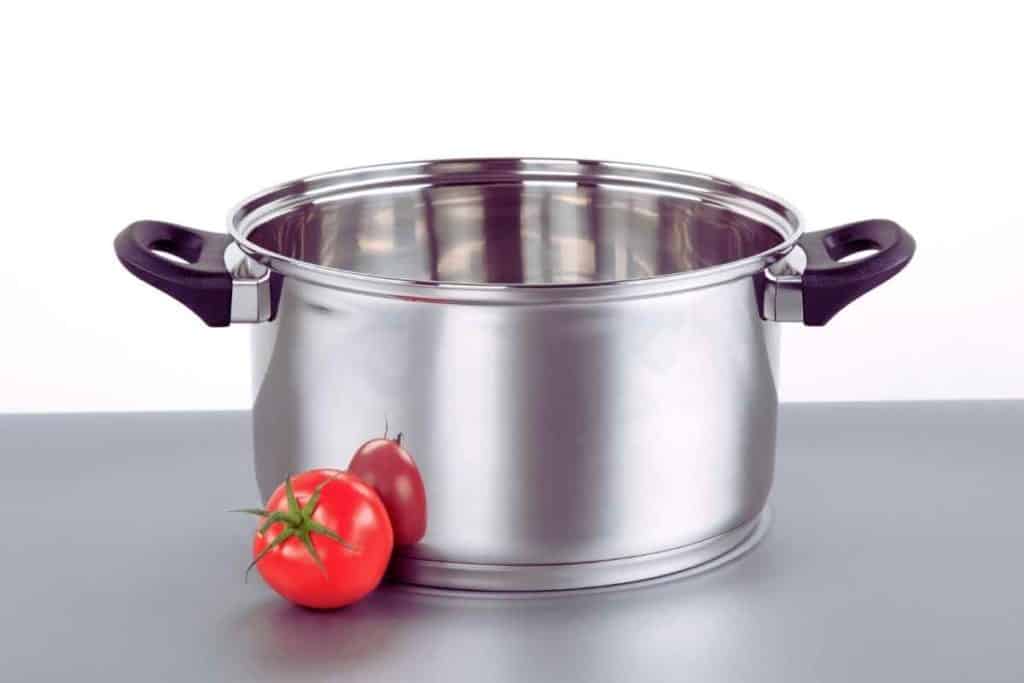
What Are the Benefits of Using a Stainless Steel Pan in the Oven?
A stainless steel pan is a kitchen staple that has a variety of uses. It is perfect for cooking a variety of foods, from roasted vegetables to chicken breasts. Stainless steel is a durable material that is also easy to clean. When used in the oven, a stainless steel pan can help to create evenly cooked food that is full of flavor.
What Are Risks Associated with Using Stainless Steel Pan in Oven?
There are a few risks associated with using a stainless steel pan in the oven. The most common one is that the pan can warp if it’s not heated evenly. This can cause the food to cook unevenly, and it can also be a safety hazard. Another risk is that the pan can get too hot and cause a fire.
How to Clean Stainless Steel Bakeware?
While baking, your food can get stuck to the stainless steel pots and pans, and that food particles or oil may burn on its surface. Therefore, you will have to do some extra cleaning. Here are some simple tips for cleaning your stainless steel bakeware to make it look new.
1. Dish Soap and Boil Water
Pour some water and dish soap into your stainless steel pot and let it boil on the stovetop for five minutes or so on medium heat. Let it cool down, scrub it with a soft sponge, rinse it with water, and dry thoroughly.
2. Baking Soda
Make a paste out of baking soda and water; cover your stainless pot with this paste. Let it sit for about 2 hours, scrub it with a soft sponge, then wash it with dish soap and water, and your pan will be spotless.
Moreover, if you have stubborn stains, you can boil some water in the pan; once the water is boiling, add some baking soda and let it cook for another three to five minutes.
Remove the pan from the heat, let it cool down, and rest for two hours. Scrub the food residue with a soft sponge, wash it with water and dish soap, and dry thoroughly.
3. Sea Salt
Pour enough water into your stainless steel pots to cover stains and burns and boil it on the stovetop on medium heat. Once the water starts boiling, add two to three tablespoons of sea salt to the water, let it brew for two to three minutes, and turn off the heat.
Let it cool down and rest for two hours, scrub it with a soft sponge to remove stains, rinse it with water, and dry thoroughly.
Conclusion
To wrap it up, stainless steel is the best material for cooking and baking. It is durable, versatile, hard to damage, and easy to use and clean. Furthermore, stainless steel pots are typically safe for microwaves, dishwashers, and stovetops. However, you will have to check the handles and lids of the pans as if they are oven-proof or not before baking.
Stainless steel pans and pots are incredibly versatile, convenient, and easy to use. Further, the high-quality stainless steel pots conduct heat better and are best for baking. However, it is important to remember the above-discussed things to get the desired result. Additionally, you can bake bread in stainless steel pots if you do not have a Dutch oven.
If you are interested in the best kitchen products and accessories, be sure to visit my Recommended Products Page (click to see my page), Which includes all of my top picks by category.

